The Samsung Galaxy Watch 3 is the long-awaited successor to one of our favorite wearables, the original Galaxy Watch, and we’re enjoying all the new perks and features. But how does it stack up to the market leading competitor, the Apple Watch 5?
While both watches sit on either side of the operating system divide – the Apple Watch 5 works seamlessly with iPhones, while the Galaxy Watch 3 integrates with Android phones far better than iOS devices – so choosing between the two may come down to which ecosystem serves you better. Apple Watches only link to iPhones, while the Samsung Watch 3 won’t be able to reply to messages or transfer much health data unless linked to Android phones
That aside, both are all-around watches that can fit your fashion and your fitness needs – which is to be expected with their high prices relative to other smartwatches. These are the top-tier devices in their field, and you’d be hard-pressed to find wearables that outperform them.
The Apple Watch 5 and Galaxy Watch 3 do differ substantially in features, operating system, and functionality, but it’s tough to summarize their appeal. Instead, we’ve broken them down section-by-section, so read on for our deep dives into how they compare by category.
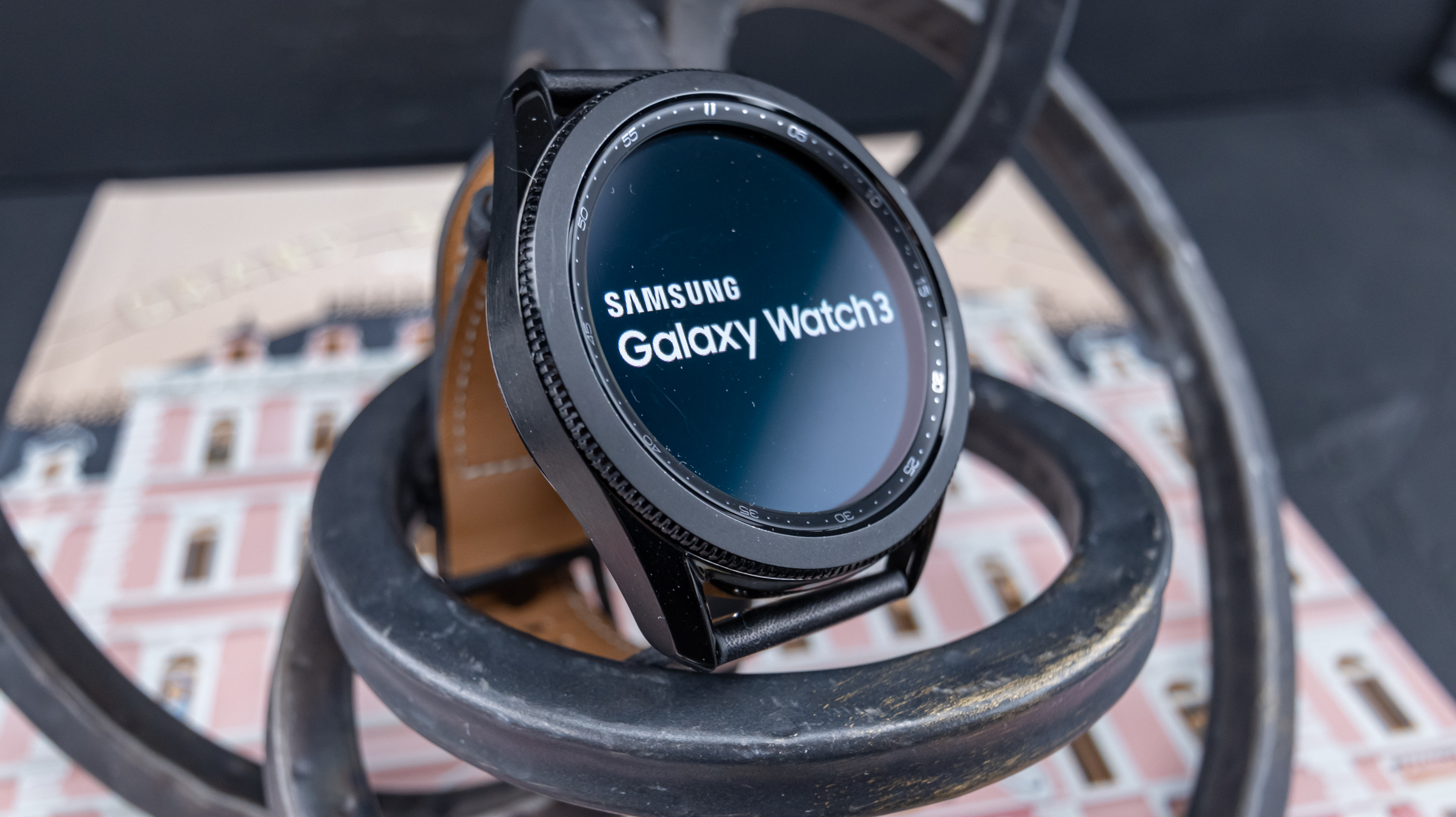
Samsung Galaxy Watch 3 vs Apple Watch 5 price and release date
The Samsung Galaxy Watch 3 was officially announced at Samsung Unpacked on August 5, 2020 and released a day later on August 6, 2020. Yes, it’s the direct successor to the original Samsung Galaxy Watch – we’re not sure why the company skipped the ‘Galaxy Watch 2’ name, but there was a two-year gap between the two watches.
The Galaxy Watch 3 starts at $399 / £419 / AU$649 for the smaller 41mm Galaxy Watch 3, and $329 / £429 / AU$699 for the bigger 45mm version, both in stainless steel – and there’s a titanium version in 45mm coming later in 2020 at an undisclosed cost. The price is even higher for the LTE-connecting models: $449 / £439 / AU$799 for the 41mm version, and $479 / £459 / AU$849 for the 46mm version.
The Galaxy Watch 3’s stainless steel cases come in three colors total, split between sizes: 41mm exclusively has Mystic Bronze, 45mm has Mystic Black, and both come in Mystic Silver. They’re shipped with a color-coordinating leather band, and the titanium version will have a corresponding metal link band.
The Apple Watch 5 launched alongside the iPhone 11 lineup on September 10, 2020. Costs for the cheaper GPS-only model start at $399 / £399 / AU$649 for the smaller 40mm size, rising to $429 / £429 / AU$699 for the 44mm size. LTE versions of the watch start at $499 / £499 / AU$799 for 40mm, and go up to $529 / £529 / AU$849 for the 44mm version.
Those baseline prices are for the aluminum case, which comes in three finishes: Gold, Space Black, and Silver. The stainless steel casing costs more based on band choice: $699 with a sport loop or sport band, $749 with a Milanese loop, or $799 with a leather loop. The titanium casing, in light and dark finishes, starts at $799 with a sport loop and goes up to $899 with a leather loop. Finally, a Ceramic finish will push the cost to a whopping $1,299 with a sport loop and going up to $1,399 with a leather loop.
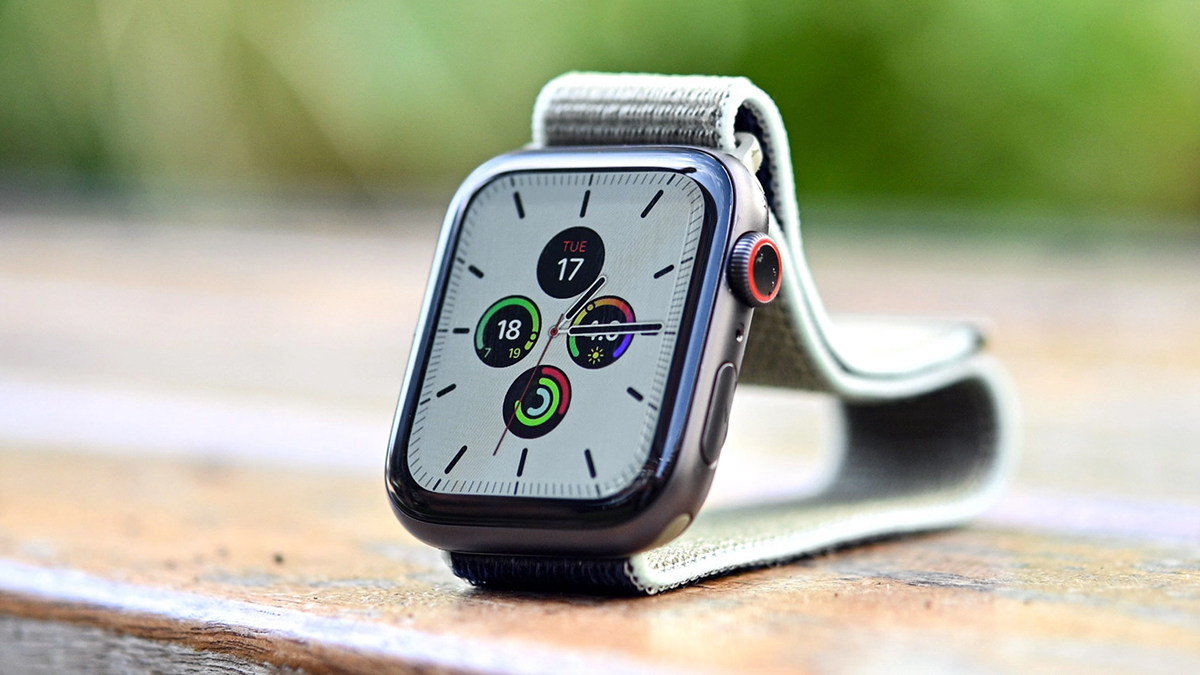
Samsung Galaxy Watch 3 vs Apple Watch 5 design
The Samsung Galaxy Watch 3 is a refinement of the original Galaxy Watch and inherits much of its design. While the new watch is 14% slimmer and 15% lighter than the old, with some visibly streamlined elements, it’s still a large smartwatch.
Most importantly, the Watch 3 retains a physical rotating dial, which was one of our favorite features of the original Galaxy Watch that made it a pleasure to navigate the interface with precision and tactile clicking. Visually, the dial has lost its triangular pips that marked time, which overall contributes to a more minimal look. The lugs connecting the watch case to the strap are smaller, the buttons are distinct and rounded, and the leather band instead of rubber all contribute to a classy watch that takes cues from traditional timepieces.
The Galaxy Watch 3 has a suite of sensors on the bottom that face the wrist: an ECG sensor as well as an SPO2 sensor to track blood oxygen levels, as well as sensors to monitor blood pressure.
The Apple Watch 5 continues its own tradition of rounded rectangle that began all the way back with the original Apple Watch. The oval button that summons recent apps and rotating crown are relatively unchanged, while the ECG sensors on the watch’s bottom remain virtually the same from their introduction in the Apple Watch 4.
Design-wise, the Apple Watch 5 has more in common with the Samsung Galaxy Watch Active 2 – an overall ‘sporty’ look that contrasts with the more traditional appearance of the Galaxy Watch 3. The baseline aluminum versions Apple Watch 5 weighs 40.6 g for the 40mm model and 47.8 g for 44mm, which is notably lighter than the 48.2 g of the 41mm Galaxy Watch 3 and well under the 53.8 g of the 45mm Samsung watch.

Samsung Galaxy Watch 3 vs Apple Watch 5 display
The Samsung Galaxy Watch 3 has a 1.2-inch (41mm) or 1.3-inch (45mm) circular AMOLED display, with a resolution of 360 x 360 pixels, that’s protected by Corning Gorilla Glass DX. It inherits an always-on display from its predecessor, which shows a minimal version of the watch face for, say, checking time without draining much battery.
The Apple Watch 5 has a 1.57-inch (40mm) or 1.73-inch (44mm) rectangular OLED sapphire crystal display, with a resolution of 448 x 368 pixels. Apple introduced an always-on display with this model, beating Samsung to the punch by nearly a year.
While both watches have sharp displays with nearly the same pixel density, the biggest difference is form factor. The Galaxy Watch 3 screen is circular, while the Apple Watch 5 display is more rectangular – and this defines each one’s experience. While modern app content is arguably better suited for rectangular screens, the Watch 3’s rotating physical dial is easier to scroll with than the Apple Watch 5’s crown.
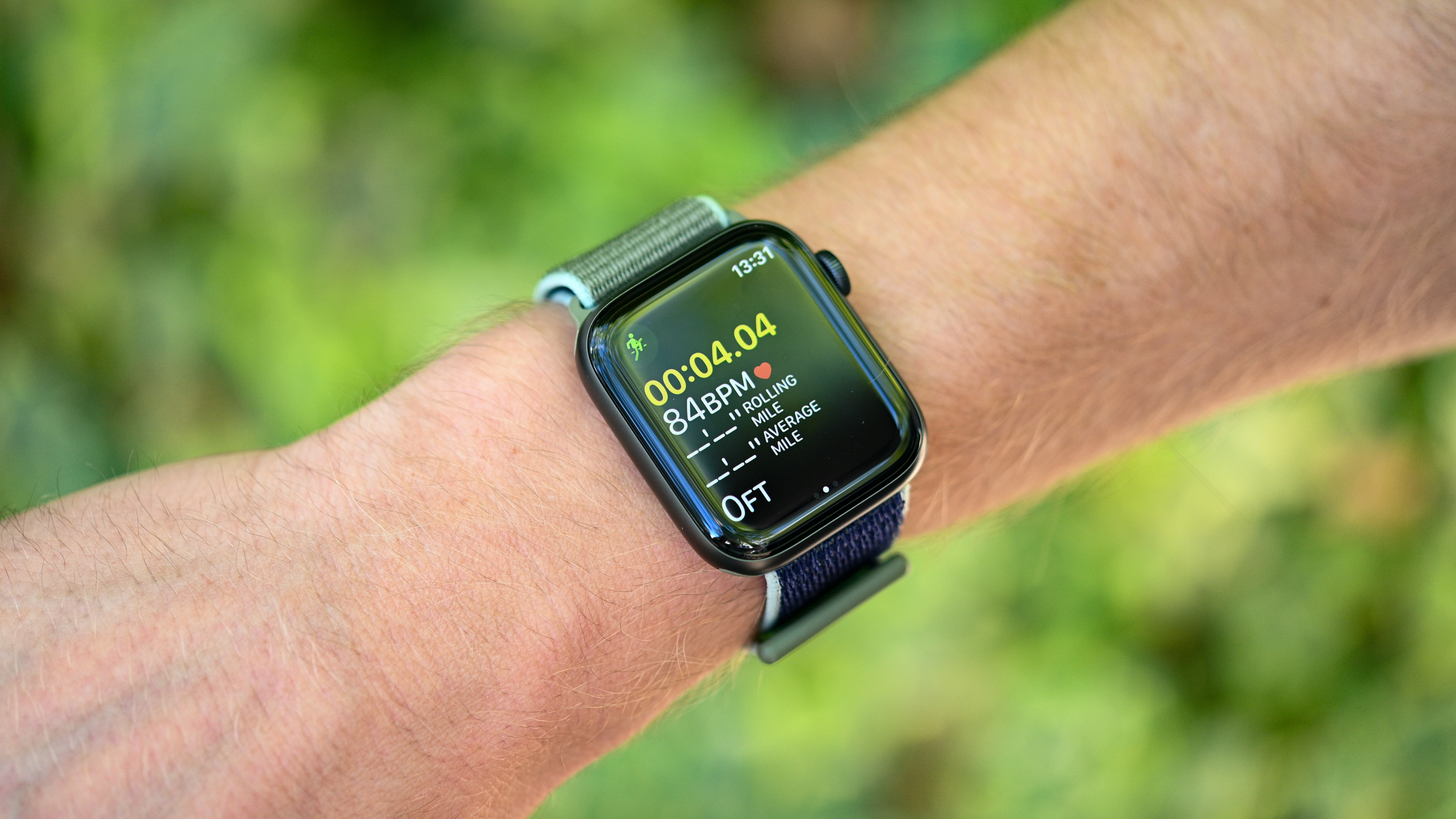
Samsung Galaxy Watch 3 vs Apple Watch 5 fitness
The Galaxy Watch 3 builds on its predecessor’s fitness modes and offerings, which were acceptable but not impressive. It can track a total of 40 different workouts, seven of which (running, walking, swimming, cycling, rowing, elliptical, and aerobically dynamic) the watch can detect and start tracking automatically. Whether it’s actually a pleasure to exercise with the big watch will have to wait until we’ve done more testing – the original Galaxy Watch was notably top-heavy.
The other features are supplementary but helpful, like a VO2 Max reading that calculates the maximum amount of oxygen your body can take in while exercising. The Watch 3 also gets fall detection, which has been in Apple’s wearables since the Apple Watch 4. And of course, the Watch 3 has SPO2 blood oxygen tracking and blood pressure monitoring.
We haven’t fully tested the Galaxy Watch 3’s sleep tracking yet, but it’s encouraging that Samsung partnered with the US National Sleep Institute to help develop the feature. It automatically tracks sleep cycles and gives a morning report detailing sleep quality and tips on getting better sleep.
The Apple Watch 5 doesn’t have sleep tracking, though it’s rumored to be coming in the watchOS 7 update arriving later in 2020. Even if it does, the Apple smartwatch has such limited less-than-a-day battery life that it’s hard to imagine it being a helpful feature; at least the Galaxy Watch 3 can last overnight (or even two) to monitor sleep habits.
The Apple Watch 5 shines in its fitness offerings, though, even if little has changed since the Apple Watch 4. The watch accurately tracks and auto-detects workouts, steps, heart rate, and elevation thanks to the new internal compass, and automatically feeds the data into the iOS Fitness and Health apps, if the watch is connected to an iPhone. This makes the Apple Watch 5 a better fitness partner for those who have an iOS device.
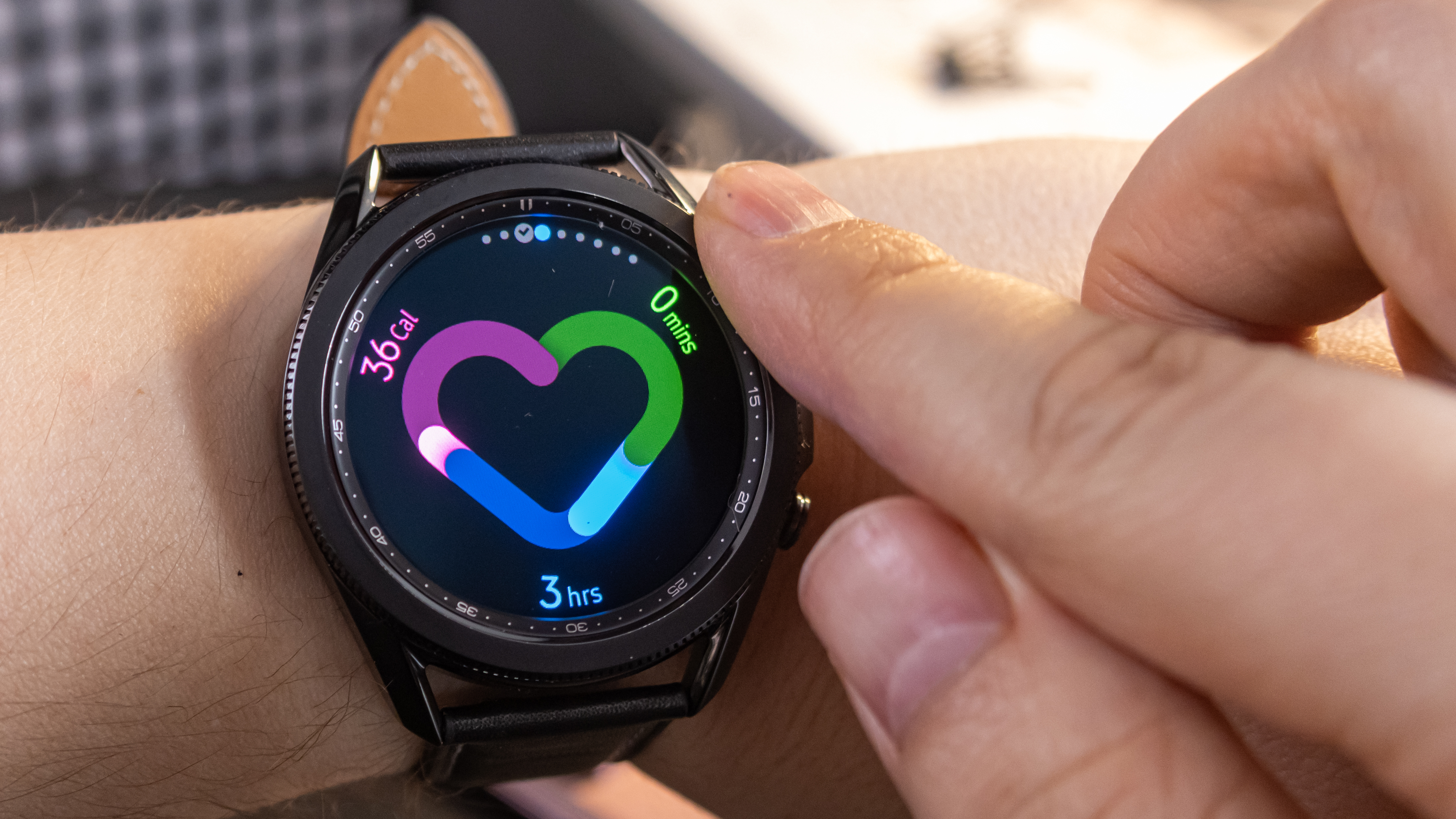
Samsung Galaxy Watch 3 vs. Apple Watch 5 performance and battery
The Samsung Galaxy Watch 3 packs the Exynos 9110 chipset, the same as in the original Galaxy Watch and the Galaxy Watch Active 2. It has a flat 1GB of RAM and 8GB of storage for apps and media.
The Galaxy Watch 3 runs on Samsung’s Tizen wearable OS 5.5, which is the company’s proprietary wearable OS it uses instead of Wear OS. This allows Samsung to fine-tune how the rotating dial works within the interface, but it also potentially means fewer apps that have to release a separate version for the OS.
The Apple Watch 5 is powered by the Apple S5 mobile chipset, which reportedly isn’t much changed from its predecessor’s silicon, but does have a magnetometer (for the compass) and better power efficiency – all of which seems to have been counterbalanced by the always-on display, meaning the battery life is essentially the same as the Apple Watch 4. The new smartwatch does double its storage to a whopping 32GB for all the app and media you’d want to store locally.
Apple Watch 5 runs watchOS 6 out of the box, which notably has its own App Store for users to browse and download apps on the watch itself without having to route through a connected phone. The OS also has voice memos and basic versions of iOS apps (like the calculator), as well as ambient noise monitoring.
Battery life is where these smartwatches seriously differ. The Apple Watch 5 claims 18 hours off its 296mAh of capacity, which makes daily recharging a necessity – since, well, it can’t even last a full day. We haven’t fully tested the Galaxy Watch 3, but given its predecessor managed to repeatedly last over three days, and even into the fifth day on occasion without recharging, we’re eager to see how long it will last. But the disparity in capacity between the smaller and larger versions of the watch (247mAh and 340mAh, respectively) leads us to think it’ll be two days this time around.
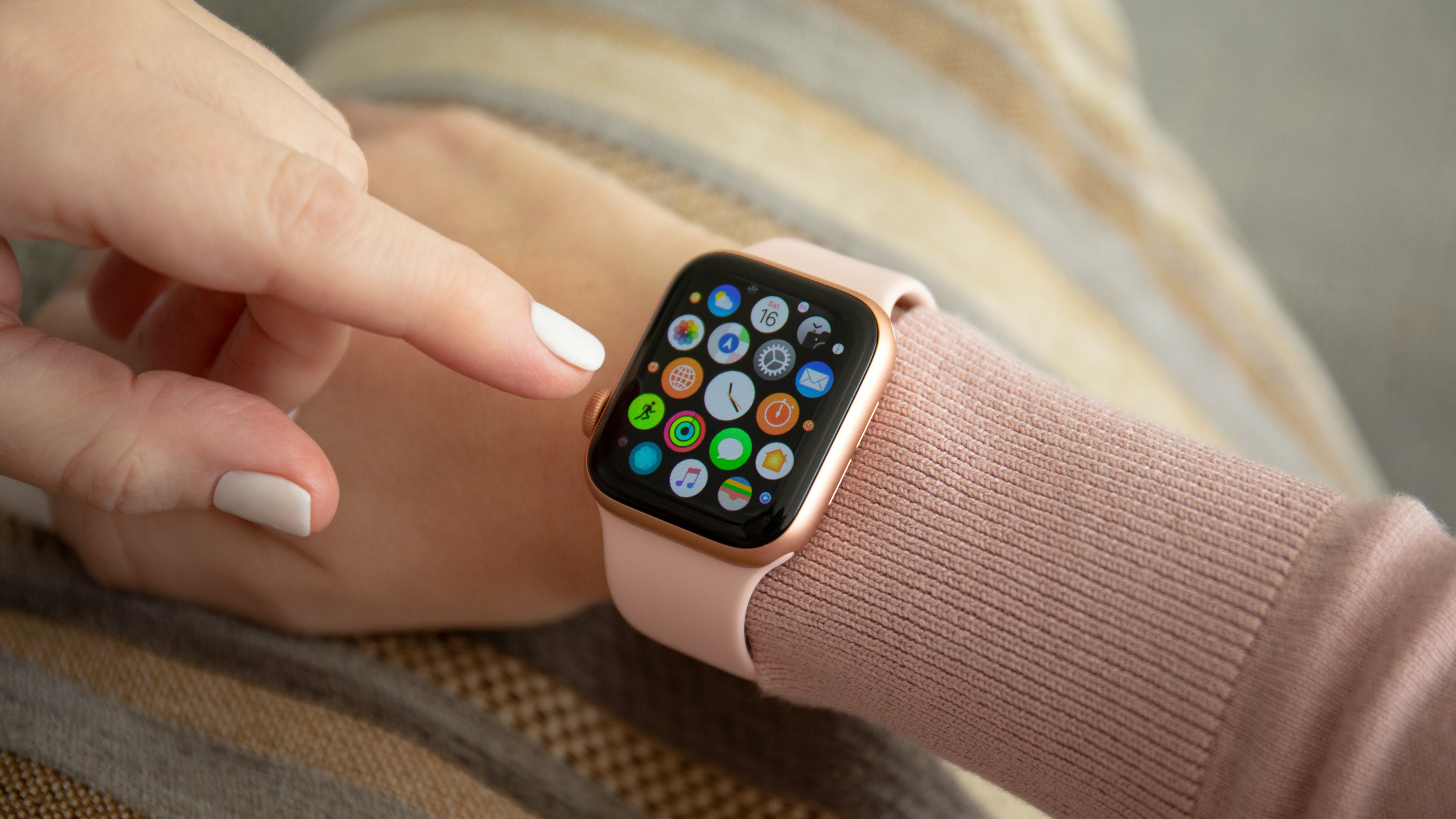
Takeaway
Given the benefits of matching these smartwatches with phones of their operating systems, it’s likely best to pick the wearable that works best with the smartphone you already own. But these wearables are different enough in form and features to consider on their own merits.
The Galaxy Watch 3 is big, no doubt about it, but it looks classier and more broadly-appealing than its chunky predecessor, especially with its leather straps. Otherwise, its appeal is virtually the same as the original Galaxy Watch, albeit with more sensors for ECG and SPO2 to track health conditions.
The extra battery and health features give the Galaxy Watch 3 a bit of an edge on the Apple Watch 5 (where its SPO2 sensor is cleared by medical authorities, anyway), but the Apple-tuned wearable has polish befitting its brand. If you don’t mind recharging your smartwatch more often, the Apple touch and seamless integration with iPhones is just easy.
Either way, these devices represent the top picks of the best smartwatches on the market. If you want all-around quality and are willing to pay the price, both are great picks.
- Stay on the cutting edge of tech with the TechRadar newsletter
from TechRadar - All the latest technology news https://ift.tt/3a61pic
via IFTTT
Subscribe by Email
Follow Updates Articles from This Blog via Email



No Comments